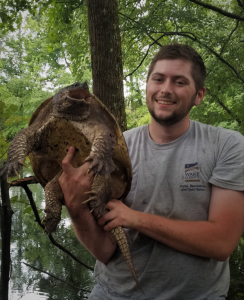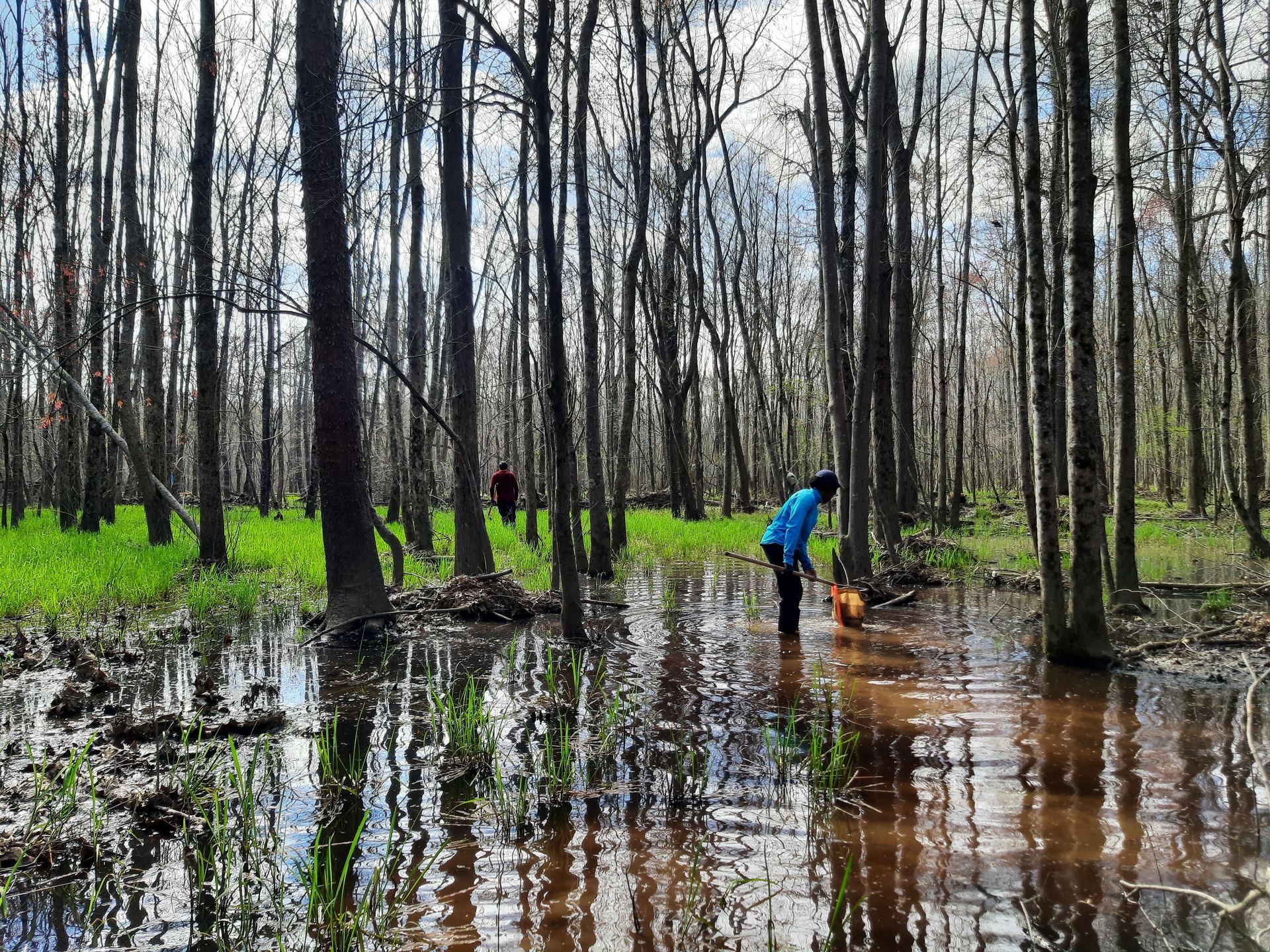Thomas Reed
Open Space Assistant Manager for Wake County
Project Herpetology Expert
VWMP Site Representative for Robertson Millpond Preserve

Thomas Reed
Open Space Assistant Manager for Wake County
Project Herpetology Expert
VWMP Site Representative for Robertson Millpond Preserve
Where did you grow up and if not the Raleigh/Durham area, what brought you here?
Thomas: I grew up in Union County, NC and moved to the triangle in 2015 to attend NC State. I have been in the triangle since and currently live in Chatham County.
Where did you go to school and what led you to your career?
Thomas: I have a BS in Fisheries, Wildlife, and Conservation Biology from NC State. Growing up I was always in the woods chasing snakes and turtles and when I realized I could pursue working with wildlife as a job I knew it was the route I wanted to take. Since going to NC State, I have had many field research related positions working with flora and fauna from butterflies in North Carolina to snakes and frogs in China.
Could you tell us about your job at Wake County?
Thomas: I am the Assistant Manager for Wake County’s Open Space program. The Open Space Program currently conserves over 8,500 acres in Wake County with goals to manage and maintain these properties for the preservation of natural resources, water quality, and cultural/historic significance. I also work with the public to coordinate research permits on the sites we manage and conduct inventory efforts on rare flora/fauna.
What sparked your interest in your area of expertise?
Reptiles and Amphibians have always been the animals I was most interested in growing up. Something about the way they looked and behaved caught my attention when I was very young, and I continued to research and search for them whenever I had the chance. I was fortunate to have multiple volunteer opportunities with local museums, zoos, and universities that could help me further my knowledge and allow me the pursue working with these misunderstood animals.
What do you enjoy most about your role in the VWMP? What is your favorite memory so far working in the wetlands with the VWMP volunteers?
I love having the opportunity to help people get more hands-on experience working with the natural world around them while also contributing to research efforts. Being able to show someone the beauty of a marbled salamander or even a terrestrial leech is an opportunity to spread awareness for conservation efforts and help people gain a greater appreciation for wildlife. I wouldn’t be where I am today without having the opportunity to get involved with research efforts and interacting with nature hands-on outside of a classroom. Working with the amphibian inventory efforts is particularly close to my heart as I love helping people have a better understanding of the connections between such a small animal to the larger wetland system as a whole.

All Rights Reserved | Carolina Wetlands Association